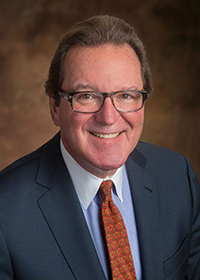I have written extensively in the past in this and our sister publication Concrete Products about how the Fed has balanced the economy over the past many years, maintaining low interest rates against the backdrop of strong employment numbers, which is a real parlor trick at a minimum. And more recently, I corrected myself and said our firm’s view of the direction of interest rates has changed. As I have said before, I stand corrected. And the reason is a simple one: COVID-19.
There is going to be one legacy about the tragedy of COVID, which will ultimately take more than one million lives in America at its current run rate, and that is the twisting and torquing it visited upon our economy. Nothing like this has affected the national and global economies since the Black Plague of the 1600s in Europe, and its impact will be felt for years to come.
Here is what happened. The lesson the Federal Reserve drew from the pre-pandemic economy was that unemployment could run at historic lows without fueling inflation. It is why the central bank last year promised it would no longer raise interest rates just because the job market was strong.
But it turns out that assumption was wrong, and the Fed now finds itself in a situation it hoped it wouldn’t face: preparing to raise interest rates to slow the economy, though the labor market remains far from where it was two years ago.
Unemployment has fallen rapidly this year, hitting 4.2% in November. That is still above the pre-pandemic trough of 3.5%, and it doesn’t count millions of people who left the labor force and have yet to return. Five million fewer people are employed now than if the pre-pandemic trend had continued.
The Fed chairman has stated the labor market is by so many measures hotter than it ever ran in the last expansion, and the ratio of job vacancies to unemployed people is at a record. Furthermore, wages are rising briskly, particularly for the lowest paid workers.
The hot labor market. This is a key reason the Fed has pivoted from a buoyant to more worried outlook on inflation, resulting in an announcement that it expects to raise rates three times next year. Nine months ago, they saw no increase until 2024 at the earliest.
But wages aren’t why inflation hit 6.8% in November, a 39-year high. That mainly reflects demand far outstripping supply for houses, cars and other durable goods. But wages will determine whether today’s inflation is transitory or persistent, as labor is the primary input to most of what consumers buy, especially services.
Hourly wage costs. A key factor in the Fed’s recent pivot was a report that hourly wage costs surged at about a 6% annual rate in the third quarter, and that sort of labor cost growth would only be compatible with the Fed’s 2% inflation target if worker productivity grew 4% a year, roughly twice its historical rate.
And today’s upward pressure on wages and prices isn’t coming just from excess demand, but also from too little supply. A combination of factors has reduced the supply of labor: generous unemployment insurance (now expired), ample wealth, accelerated retirements and fear of COVID-19 – which may have been revived by the new Omicron variant.
Yet employment in the United States was 4% lower in the second quarter compared with the end of 2019, one of the weakest among industrialized countries, and that is despite a much stronger recovery in output.
No one saw this coming. Nine months ago, there was virtually no inflation in our system, and the disconnect between a surging economy and a lack of labor to support that surge ignited the inflation torch. As a firm, we have changed our view from a prolonged period of stable inflation and low interest rates to a Fed scrambling to fight an inflation battle, which will surely result in rising interest rates for the foreseeable future.

Pierre G. Villere serves as president and senior managing partner of Allen-Villere Partners, an investment banking firm with a national practice in the construction materials industry that specializes in mergers and acquisitions. He has a career spanning almost five decades, and volunteers his time to educate the industry as a regular columnist in publications and through presentations at numerous industry events. Contact Pierre via email at [email protected]. Follow him on Twitter @allenvillere.
